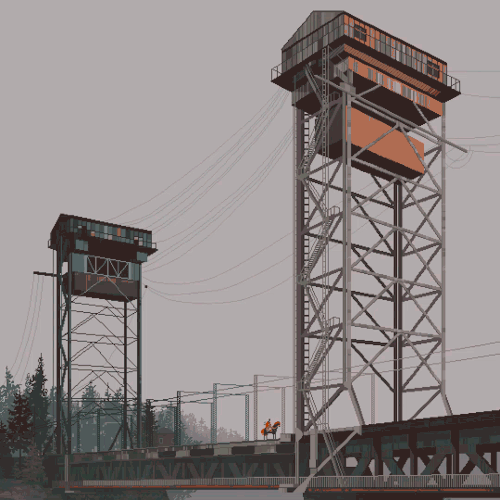What Do Mozart, Christopher Columbus And J.P. Morgan Have In Common? It Turns Out They All Have Minerals

What do Mozart, Christopher Columbus and J.P. Morgan have in common? It turns out they all have minerals named after them. A new member of this exclusive club has recently been inducted: Mercouri Kanatzidis, materials scientist at the U.S. Department of Energy's (DOE) Argonne National Laboratory and professor at Northwestern University. Kanatzidis is the namesake of a newly discovered mineral, kanatzidisite, which was recently unearthed in Hungary and announced by the International Mineralogical Society. Kanatzidisite belongs to a class of materials known as chalcogenides, which Kanatzidis has studied extensively for decades at Argonne and Northwestern. Chalcogenides are sulfur-containing materials that in antiquity were used in the production of copper metal. "To have a mineral named after me? Well, that's a real 'rock star' moment in my career," Kanatzidis said. "It's a very unusual honor, and you hope the name will stick around a long time." The mineral was found in the Nagybörzsöny deposit at Alsó-Rózsa, Hungary, and now can be found at the Museo di Storia Naturale, Università di Firenze, Florence, Italy. Its chemical formula is (SbBiS3)2Te2.
Continue Reading.
More Posts from Qorgulch and Others

Another shot from the Boys New York Times photoshoot by Hobbes Ginsberg via coralie.kraft on instagram!




From 1903 to 1907 Augustus Jansson produced more than 30 striking adverts for the Queen City Printing Ink Company, including the wonderful Ink Beasts Parade series, with its “Magenta Ponies” and “Orange-Yellow Ibexiaticus”. More here: https://publicdomainreview.org/collection/augustus-janssons-queen-city-ink-adverts-1903-1907


Utrecht University geologist Suzanna van de Lagemaat has reconstructed a massive and previously unknown tectonic plate that was once one-quarter the size of the Pacific Ocean. Her colleagues in Utrecht had predicted its existence over 10 years ago based on fragments of old tectonic plates found deep in the Earth's mantle. Van de Lagemaat reconstructed lost plates through field research and detailed investigations of the mountain belts of Japan, Borneo, the Philippines, New Guinea, and New Zealand. To her surprise, she found that oceanic remnants on northern Borneo must have belonged to the long-suspected plate, which scientists have named Pontus. She has now reconstructed the entire plate in its full glory. The work has been published in Gondwana Research.
Continue Reading.
-
 calicotomcat reblogged this · 1 year ago
calicotomcat reblogged this · 1 year ago -
 buttermilk-princess reblogged this · 1 year ago
buttermilk-princess reblogged this · 1 year ago -
 buttermilk-princess liked this · 1 year ago
buttermilk-princess liked this · 1 year ago -
 cheezbot liked this · 1 year ago
cheezbot liked this · 1 year ago -
 planetariump4 liked this · 1 year ago
planetariump4 liked this · 1 year ago -
 toooldfortumbling reblogged this · 1 year ago
toooldfortumbling reblogged this · 1 year ago -
 toooldfortumbling liked this · 1 year ago
toooldfortumbling liked this · 1 year ago -
 shacklesburst liked this · 1 year ago
shacklesburst liked this · 1 year ago -
 bubobubosibericus reblogged this · 1 year ago
bubobubosibericus reblogged this · 1 year ago -
 bubobubosibericus liked this · 1 year ago
bubobubosibericus liked this · 1 year ago -
 qorgulch reblogged this · 1 year ago
qorgulch reblogged this · 1 year ago -
 qorgulch liked this · 1 year ago
qorgulch liked this · 1 year ago -
 nothotsheadempty liked this · 1 year ago
nothotsheadempty liked this · 1 year ago -
 rosecolouredocean liked this · 1 year ago
rosecolouredocean liked this · 1 year ago -
 lhazaar liked this · 1 year ago
lhazaar liked this · 1 year ago -
 absolutelyunknowning liked this · 1 year ago
absolutelyunknowning liked this · 1 year ago -
 sciencetylia reblogged this · 1 year ago
sciencetylia reblogged this · 1 year ago -
 ag-schmied liked this · 1 year ago
ag-schmied liked this · 1 year ago -
 fifthflame liked this · 1 year ago
fifthflame liked this · 1 year ago -
 meowdogbite liked this · 1 year ago
meowdogbite liked this · 1 year ago -
 heinidee liked this · 1 year ago
heinidee liked this · 1 year ago -
 blancpain1735-fan-luxembourg reblogged this · 1 year ago
blancpain1735-fan-luxembourg reblogged this · 1 year ago -
 blancpain1735-fan-luxembourg liked this · 1 year ago
blancpain1735-fan-luxembourg liked this · 1 year ago -
 fatherizzyisms liked this · 1 year ago
fatherizzyisms liked this · 1 year ago -
 spiritmen01 liked this · 1 year ago
spiritmen01 liked this · 1 year ago -
 thespacesay liked this · 1 year ago
thespacesay liked this · 1 year ago -
 esmeralda-anistasia reblogged this · 1 year ago
esmeralda-anistasia reblogged this · 1 year ago -
 esmeralda-anistasia liked this · 1 year ago
esmeralda-anistasia liked this · 1 year ago -
 pandorasbellybag liked this · 1 year ago
pandorasbellybag liked this · 1 year ago -
 urbancelt liked this · 1 year ago
urbancelt liked this · 1 year ago -
 spacetimewithstuartgary reblogged this · 1 year ago
spacetimewithstuartgary reblogged this · 1 year ago -
 spacetimewithstuartgary liked this · 1 year ago
spacetimewithstuartgary liked this · 1 year ago -
 advocake liked this · 1 year ago
advocake liked this · 1 year ago -
 p41nkiller liked this · 1 year ago
p41nkiller liked this · 1 year ago -
 certifiedgirlthing reblogged this · 1 year ago
certifiedgirlthing reblogged this · 1 year ago -
 certifiedgirlthing liked this · 1 year ago
certifiedgirlthing liked this · 1 year ago -
 shinxfranky reblogged this · 1 year ago
shinxfranky reblogged this · 1 year ago -
 crazydutchman liked this · 1 year ago
crazydutchman liked this · 1 year ago -
 ohfugecannada liked this · 1 year ago
ohfugecannada liked this · 1 year ago -
 stranac-u-svemiru liked this · 1 year ago
stranac-u-svemiru liked this · 1 year ago -
 karlfelersii liked this · 1 year ago
karlfelersii liked this · 1 year ago -
 tolbachik liked this · 1 year ago
tolbachik liked this · 1 year ago -
 quanticide liked this · 1 year ago
quanticide liked this · 1 year ago -
 terezisexbuttpyrope reblogged this · 1 year ago
terezisexbuttpyrope reblogged this · 1 year ago -
 mermaidvampire liked this · 1 year ago
mermaidvampire liked this · 1 year ago -
 poetic-poppy liked this · 1 year ago
poetic-poppy liked this · 1 year ago -
 cafeomancer liked this · 1 year ago
cafeomancer liked this · 1 year ago -
 mindblowingscience reblogged this · 1 year ago
mindblowingscience reblogged this · 1 year ago




